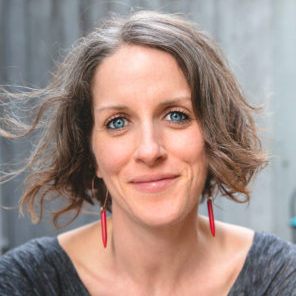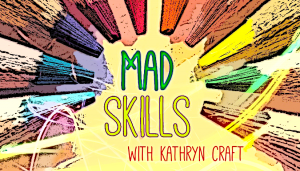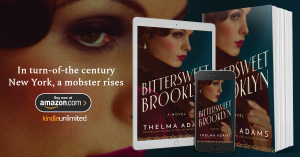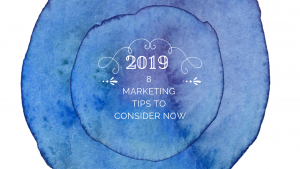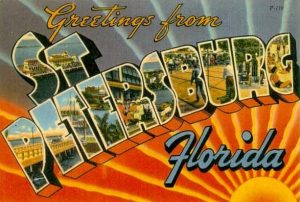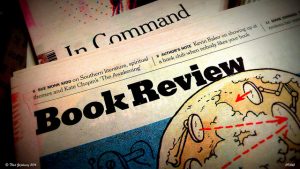Marketing
I’ve invited Zoe Quinton to join me for this month’s post. She’s not just the brilliant daughter of New York Times bestselling author Laurie R. King, she’s also Laurie’s agent and publicist. In her “spare time,” Zoe is an editor and a consultant on the publishing business, including concept development and marketing.
For this post, I wanted to focus on developmental editing, a service both Zoe and I provide. It’s distinguished from copy editing in several significant ways. Whereas the latter deals with issues such as grammar, usage, syntax, punctuation, and fact-checking, developmental editing deals with more global story issues: characterization, theme, plot, pacing, continuity, and so on.
David: Why not tell our readers a little bit about your background and how you got into developmental editing.
Zoe: Well, for me that’s a little like saying how did you get into breathing. I can’t honestly remember a time that books weren’t a large part of my life, a constant companion, a source of escape and wonder. I remember even as a child narrating the mundane events of my daily life as if they were written down in a book. I have always eaten, breathed, drank words.
I can’t honestly remember a time that books weren’t a large part of my life
It helped that my parents also both lived a life of the mind, my dad as a religious studies professor at our local university and my mom first as an academic and then as an author. I’ve been accompanying her to publishing events since I was thirteen years old, so words and reading are literally part of my blood.
I myself am a recovering academic, as I got a master’s degree in international history from the London School of Economics when I was 25. I loved the research and the—no surprise—storytelling of history, and the training I received was priceless: I learned to think and write and argue, how to shape words into a weapon or a salve, how to choose just the right fact to prove my point and let the others fall by the wayside.
A few years later, I started working as my mother’s publicist and later agent, and I soon leveraged my decades of experience by her side into a consulting business helping authors write, edit, and sell their books. My favorite part of my work is truly the editing, where I can get lost in the words and the flow of the story for hours at a time. In a way my life has come full circle—I’m still the girl with her nose stuck in a book, but now I’m getting paid for it.
David, I’d like to know what your favorite part of editing is. Do you, like me, stare into space while working on a project trying to figure out how to make that tricky plot point work? Or is it when a client really gets it and runs with your advice in just the right way?
David: Since I came to developmental editing by way of teaching, I can readily say that the best part of editing is when a client gets back to me saying they understand what I was trying to convey about their work and have launched […]
Read MoreWe at Book Brush are super excited to let all of you know about a new marketing product for authors. Are you an author that has ever struggled with creating great images to use on social media or for ads you are running? I know this can be a daunting task. Book Brush has made this task easy! You can try out their limited plan for free and start making great looking images within minutes.
Here are some of the key benefits…….
Scroll to the bottom of the home page to sign up for the Limited (free) Plan → Book Brush
Here are a few sample images for you to check out….
P.S. For those of you that are scrolling quickly, here is the link again…… Book Brush
Read MoreYour book is coming out soon and you want to mark its entry into the world. You don’t want it to just slide out unnoticed amongst the serried ranks of ‘New Releases’ in the bookshops. You want it properly launched. But your publisher isn’t keen to do a launch. Too much time and effort for too little return, they imply. Unless you’re a celebrity, or a highly publicized first-time author with a dedicated, free-spending, large family and friends network, book launches aren’t a big part of many publishers’ promotional strategy these days. But—surprise, surprise—we authors still love them! And so it’s become more and more common for authors to put together their own book launch.
But launches are not as easy as they might sound to someone who is new to the process—that time and effort cited by reluctant publishers as reasons not to have one are very real things. As a veteran of many launches—both those I’ve attended and those I organized for my own books as an author–I can vouch for that! I’ve also recently organized other people’s book launches as a small-press publisher–generally small publishers are warmer to the idea of book launches than big ones. So I’ve accumulated some knowledge of what can help to make your launch a hit and not a miss!
First of all, it’s about planning. Planning well ahead of time, months ahead of time. Ask yourself:
What kind of launch do I want? Big, small, straightforward, themed–that is, not just themed around your book, but with a certain look? You will not be surprised to learn that a big, themed launch is the most time-consuming and expensive to pull off. However, don’t let it stop you if that’s what you want. With our small press, we’ve run a couple of themed kids’ Christmas book launches with a cast of thousands. Well, not exactly thousands but you know what I mean. Readings, music, party gifts and prizes have worked really well, but have also been a large amount of work to get right, with many panicky pre-launch moments.
The smaller, more straightforward launch, where someone launches the book with a short speech, the author says a few words, then everyone toasts the book baby with the sparkling stuff before hopefully lining up to buy signed books whilst trying to graze on the last remaining nibbles, might not be as glamorous but they can still work really well, especially if this is your first book, you’re celebrating it locally amongst your family and friends, and everyone’s excited to see you in print. When you’ve had several books out, it’s better to space out your launches—don’t have one for each book, because people, even your nearest and dearest, get launch fatigue. And small, standard launches are much, much easier to get right, aren’t nearly as much work, and booksellers know exactly what to expect and don’t get jumpy about unusual activities happening too close to those neat shelves.
Read Morephoto adapted / Horia Varlan
Since it’s Valentine’s Day, I’m going to detour from my more typical craft posts to talk about the art of seduction.
Mm-hmm, that’s right: we’re going to talk submission packages.
I hear you, already moaning with anticipation and pleasure (although you’re ahead of yourself: this usually doesn’t come until the climax). Your attitude is on the right track. The only way to beg interest in your manuscript as it heads into the world is through a well-designed submission package. How will you wrap it—in the negativity with which so many approach the tasks of query letter and synopsis writing, or with the wily passion befitting your novel’s love letter to the world?
This post is not intended to help you craft these all-important documents. I’ll include links to other great WU posts for that. My aim is to help you love them, by showing how they work together to seduce a reader. (If you are seeking traditional publication, “reader” means an agent or small-press editor. If self-publishing, and using such material for back-cover copy, “reader” may be the end purchaser.)
Think these materials are too brief to fairly represent your project? Think string bikini. You might be surprised how revealing they can be. Let’s look at each aspect of the package in terms of its function.
Query: The Hook
The query is the bedrock of the submission package. This letter may be all an agent ever sees, since many request a query only. Rest assured that if written well, it is enough to earn an invitation to send additional pages. If you’ve ever bought a novel based on back-cover copy alone, you know this can work.
In just a few paragraphs, the query letter suggests whether you are ready to make the transition from writer to published author. Its opening is your pitch: one or two concise, enticing, cogent paragraphs meant to align us with your protagonist’s goal, hook us with its major complications, and suggest why any of this matters.
Note the italicized words.
Including word count proves you can produce within an acceptable target. Your bio will convey your understanding that writing careers are not plucked from thin air; they are built on platform.
Love the query, for the way it shows you are ready for this relationship.
Synopsis: Story Structure
The purpose of the synopsis is to assess […]
Read MoreWe are so excited to welcome our newest contributor to Writer Unboxed—-Ann-Marie Nieves! Ann-Marie is the founder of the highly respected company Get Red PR, with expertise in PR, advertising, marketing, copywriting, community relations, social media, and more! From her bio:
Ann-Marie is a communications generalist grounded in traditional media and proficient in accessing the power of social media. Within traditional outlets, she has garnered placements in media as diverse as: The Wall Street Journal, The New York Times, CNN, NPR, Fitness, Parade, Working Mother, Fox Business Network, Life & Style, InStyle, E!, New York Magazine and The Oprah Winfrey Show.
Welcome, Ann-Marie!
It’s my 20-something year in PR, my 10th in social media, and good ole lucky 13 as a tiny business owner. While I’m thoroughly enjoying the wisdom of my 40s, I can honestly say that each day at my desk, seated in my well-worn chair, feels brand new.
You’ve seen the substantial changes in the media world in 2018—several magazines will cease printing or reduce print schedules. (We’ll miss you Glamour!) You’ve experienced the seismic shifts in social media world. (I can follow #dogsofinstagram hashtag?!) While much has been written in the marketing communications sphere about highlights for 2019, here’s what I’d like my colleagues in words to pay attention to:
Read MoreAs your book’s publication date approaches, it’s natural to turn to the pros involved in its promotion — your in-house publicist, the independent PR firm you’ve hired, or both — and ask:
“What can I do to help?”
After all, there is so much to do! And participating in the process can bring a sense of having an iota of control over this overwhelming and frankly, often quite frightening, journey.
In truth, there are a million things you could do. But while it might make you feel good to get hands-on with this project, many things might not actually help. Reaching out to every distant friend or connection who knows somebody at a magazine or TV station to ask if they can cover your book, to cite just one example, won’t help much at all, because those efforts are not well-targeted.
There are also a number of things you should be doing no matter what, such as staying on top of your social media (Instagram in particular is becoming the new it place for book promo) and organizing a launch event. But while these are all good for your book’s visibility, they don’t directly help your publicists with their job.
So what does?
Lately my team and I have been noticing a trend that’s given us one clear ask of our authors. Fewer and fewer people in the media are actually reading the books we send them. I know, it’s disappointing. But people in the media only have so many hours in the day, just like the rest of us. And more often than not, they have a whole stack of books for review on their desk. Getting to your book might feel urgent to our team and to you, but for the reporter, it’s just another multi-hundred page reading project they need to undertake.
Read MoreWhen your book launches, you naturally have a vision of where you’d like it to go and what you’d like to see happen. Reviews, interviews, readers, sales… Maybe fame and fortune! (Truth be told, many of us do harbor this dream deep down inside.) Yet, whether this vision is clear or blurred around the edges, a part of you knows that realistically, it may not take the exact shape you hope for in the end.
If you’re taking proactive steps to promote your book, staying grounded in this reality takes on a whole new meaning. After all, setting up a plan usually starts with laying out specific goals, then writing up — and plowing through — the to-do list that will bring them to fruition. Should you decide to hire a marketing or PR pro to help, the word “realistic” can easily lose its meaning altogether. Now, there’s money on the table. You’d like it to buy you exactly what you want.
As one providing these marketing and PR services, I see what often happens next: the vision morphs into a veritable checklist of desired outcomes. Specific events to speak at, specific media outlets where coverage should happen, specific social influencers who should be convinced to send out a tweet.
How I wish it were so easy! The truth is, book PR can be as messy and unpredictable as a first draft. It’s very much an art, not a science. The process is a lot like querying agents: we make hit lists of people to contact, draft press releases and email pitches that we tailor in as much as possible to specific individuals or groups, and send them out. Despite follow-up and pavement pounding, often our efforts are greeted only with radio silence.
In working on campaigns, my wonderful team and I always have our own wish lists and hopes for each book. There may be a particular news site we see as a perfect match for a specific novel we’re promoting. Or a radio show we would love to see interview this novel’s author. But even in cases where we have a strong hunch that coverage will pan out, the odds are fairly low that it will.
But there’s a beautiful flip side to this: even as we get the silent treatment from the outlets and people on our wish list (including from people we know personally), we inevitably wind up getting interest from all sorts of other wonderful outlets we had no expectations for at all. Those interviews on MSNBC, NPR’s On Point? Those articles in Marie Claire or The Washington Post? They always come as a huge, and thrilling, surprise!
Which brings me back to control. Focusing too much time or energy on a checklist of desired outcomes can actually impede your PR or marketing pro’s efforts to do what it takes to generate wonderful surprises. If an author implores us to keep trying The Today Show, for example, we may not have the bandwidth that allows the […]
Read MoreFlickr Creative Commons: Thad Zajowicz
These days there are so many ways of promoting a book—yet also so many chances of that book not being noticed at all in the flood of promotion that washes over people daily. So as an author, what do you do? In this post I’m listing a few things that have worked—and not worked—for me. These are very personal observations of course; you may have had a totally different experience.
What’s hot:
Cover reveals on social media—accompanied by an intriguing ‘tag.’ These can start a buzz well before publication.
What’s not:
Book trailers on You Tube or similar channels. Heaps of fun to make but in terms of effects on sales, pretty much nil. You don’t get half as many people looking at them, compared to cover reveals. However, as long as they don’t cost you heaps of money and time to make, there’s no reason to not do it as it can be a nice adjunct.
What’s hot:
Interviews with local radio stations—a brilliant promotion, in my experience, although that may be because at our local radio station there are at least two presenters interested in books and publishing. They and their producers are very keen on local publishing/literary news stories. I have had many people over the years say they went to their local bookshop to find a book I’d spoken about on radio. If you have a similarly engaged presenter on local radio, cultivate them; it’s really worth it.
And by the way in my experience local TV can be good but is hard to get on board.
Read More
